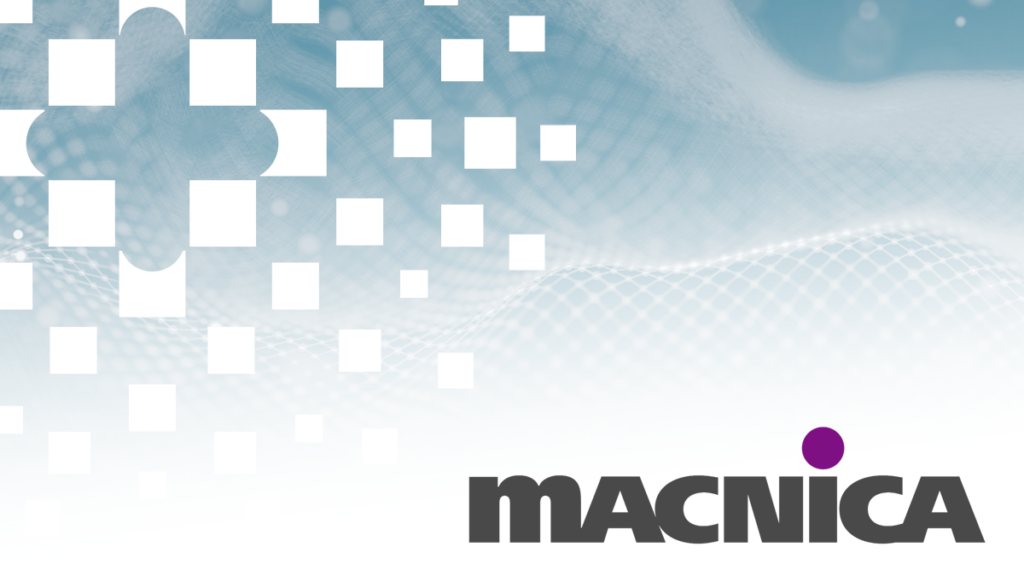Following on from last year, Macnica, Inc., Fukuyama Consultant Co., Ltd., and KCS Corporation will collaborate with Ureshino City, Saga Prefecture, to conduct a public road demonstration experiment of autonomous driving vehicle (autonomous driving level 2) through co-creation with the local community, and will verify the degree to which autonomous driving will contribute to the social impact that it will have on the local community, with an eye toward its implementation in society.
A joint venture formed by KCS Corporation, Nippon Koei Co., Ltd., and Fukuyama Consultant Co., Ltd. has been commissioned by Ureshino City, Saga Prefecture, to manage the “Ureshino City Future Technology Regional Implementation Project,” which was selected as a Future Technology Social Implementation Project by the Cabinet Office, starting in fiscal year 2021. Under the theme of “mobility services supporting visitor mobility,” the joint venture is carrying out a project to implement an autonomous driving electric bus *1 provided by Macnica, Inc. in the region as a “symbol of regional co-creation” in future tourism urban development.
In fiscal year 2023, the first public road demonstration experiment of an autonomous driving electric bus was conducted in Saga Prefecture, and operational issues were identified through the use of a remote operation management system *2, and social acceptability was assessed through questionnaire surveys and other means.
In fiscal year 2024, we conducted demonstration experiments to address the issues identified in the fiscal year 2023 experiments, seeking solutions through dialogue and co-creation with the local community, with a view to the service format and business model that will be implemented in society, and examined user needs, the necessity for night-time operation, safety measures, profitability, etc.
In the third year of the project, 2025, the project will operate two of the latest autonomous driving electric buses, the EVO, with a view to social implementation (including night driving), to verify the social impact of various use cases.
Inside the vehicle, Ureshino City’s local VTuber “Tsurufetta” will be live streaming (scheduled for Friday through Sunday afternoons), not only promoting the charms of Ureshino Onsen to tourists but also providing an extraordinary experience through two-way communication. In addition, various services will be provided to allow passengers to fully enjoy Ureshino Onsen even after boarding, such as tastings of sweets and other items available at the Ureshino Onsen Shopping Street, coupons that can be used at 12 stores in the shopping street, and bus location information and store and hot spring information using a digital map *3. Remote monitoring will also be carried out at Macnica ‘s newly established Remote Operation Control Center *4 in Hitachiota City.
Finally, based on the results of this year’s demonstration experiment, including those of these services, we will consider our approach for FY2026 and beyond.

Image of driving environment during nighttime operation Image of live streaming by Vtuber
Outline of this demonstration experiment
■ Operation period: November 5th (Wed) – November 23rd (Sun), 2025
■ Operating hours: 9:00-18:00 (11 departures per day)
*During the operation period, there will be 11 daytime flights and 3 nighttime flights on Fridays and Saturdays.
■ autonomous driving vehicles: autonomous driving EV bus EVO, EVO3 (latest model) Total of 2 units
■ autonomous driving level: Driving at autonomous driving level 2
■ Route: A circular route between Ureshino Onsen Station and the hot spring town
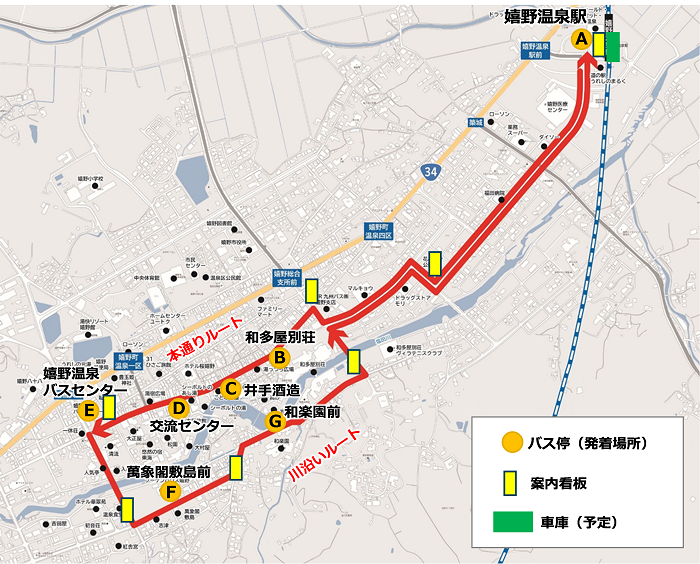
■ How to board: Just like regular route buses, board and disembark at designated bus stops (no reservations required)
*The bus has a capacity of 9 passengers, so you may not be able to board if it is full.
■Operating schedule: During the operating period, the service will operate during the following times.
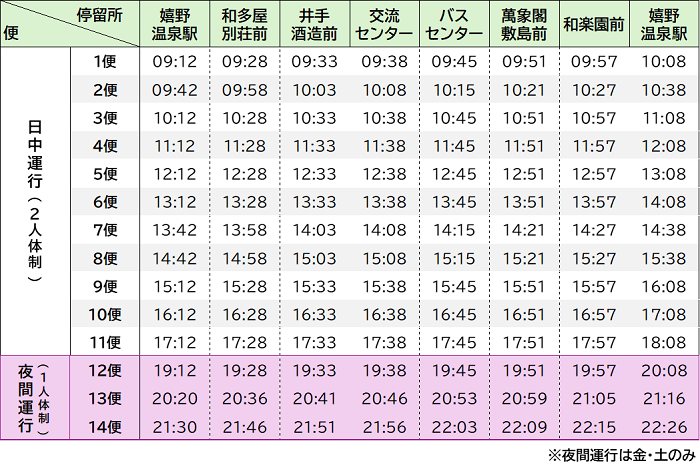
*For details of the demonstration experiment, please visit the Ureshino City website below.
https://www.city.ureshino.lg.jp/shisei/keikaku/_28638/_32318.html
1: Autonomous driving EV bus EVO/EVO3 (manufactured by Navya Mobility)
Both the EV0 and EVO3 are autonomous driving shuttle buses equipped with an autonomous driving EV system. They are EV (electric vehicle) models and can travel autonomously for approximately 9 hours (100km) on a single charge.
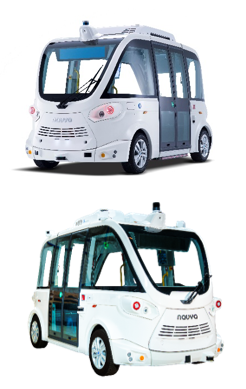
EVO
Total length: 4,776mm
Overall height: 2,652mm
Overall width: 2,098mm
Vehicle weight: 2,689 kg
Maximum speed: 18km/h
Passenger capacity: 12 people
During the demonstration experiment: Maximum of 9 passengers can ride
EVO3
Total length: 4,780mm
Overall height: 2,720 mm
Overall width: 2,170 mm
Vehicle weight: 2,500 kg
Maximum speed: 18km/h
Passenger capacity: 12 people
During the demonstration experiment: Maximum of 9 passengers can ride
–
Power source: electric motor
Autonomous driving level: Level 3 equivalent
*During the demonstration experiment, driving will be at Level 2, with an average speed of approximately 10km/h
Other: In case of emergency, the driver will manually intervene
2: Remote operation management system everfleet (manufactured by Macnica)

This is an integrated management platform for remotely monitoring passengers in the vehicle and the situation around the vehicle, with the aim of commercializing autonomous driving. It centrally visualizes vehicle location information, camera footage inside and outside the vehicle, and vehicle data such as vehicle speed, steering, and remaining battery level, and can also integrate external data linked to traffic infrastructure such as traffic lights. This allows for real-time understanding of operational status from remote locations, supporting the safe and secure operation of autonomous driving mobility. Furthermore, it can simultaneously manage a diverse group of vehicles distributed across multiple regions, and the system automatically detects and notifies users of abnormalities during operation, enabling efficient operation management by a single remote operator. This also contributes to improved operational efficiency and transportation profitability by reducing the number of personnel required.
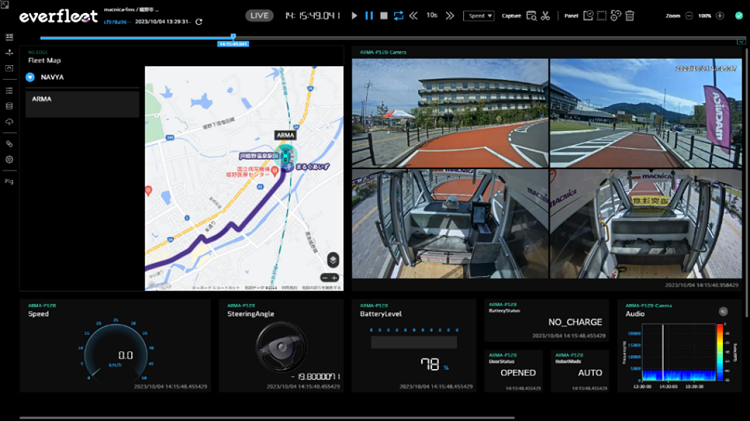
3: Digital map
Digital Map is a customizable digital map that allows you to freely express the charms of your region. You can easily create original maps unique to your region, such as tourist information, store introductions, and information on surrounding facilities. It is equipped with a variety of functions that enrich the visitor experience, such as stamp rallies, coupon distribution, and real-time congestion status display, contributing to tourism promotion and regional revitalization.
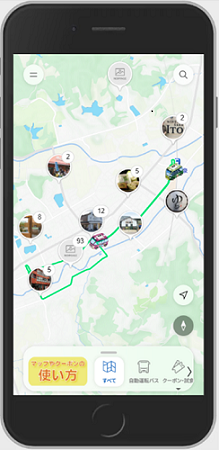
4: Remote Operation Control Center
The Remote Operation Control Center is a core hub that uses Macnica ‘s proprietary remote operation control system “everfleet” as its core system, integrating vehicle location information, operation status, and video data from inside and outside the vehicle to centrally monitor and manage a variety of autonomous driving vehicles, including autonomous driving electric buses operating in multiple regions. By establishing a system that allows one remote monitor to safely and efficiently manage multiple vehicles, it aims to optimize the operation system and improve profitability, thereby supporting the realization of a safe and sustainable mobility society.
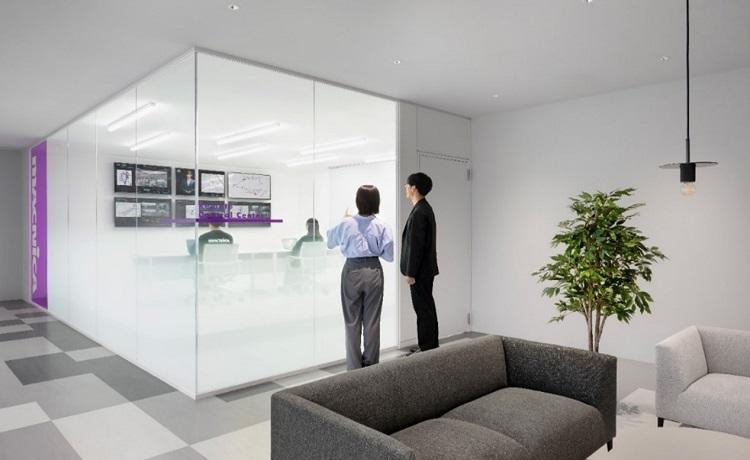
Inquiries regarding this matter
Macnica Smart City & Mobility Division
TEL: 045-470-9118
MAIL: [email protected]
*Company names and product names mentioned in the text are trademarks or registered trademarks of each company.
*The information published in the news release (including product price, specifications, etc.) is current as of the date of announcement. Please note that the information may be subject to change without prior notice.
Contact for media inquiries
Macnica://www.macnica.co.jp
Public Relations Office Miyahara E-mail: [email protected]
Macnica Building 1, 1-6-3 Shin-Yokohama, Kohoku-ku, Yokohama 222-8561

